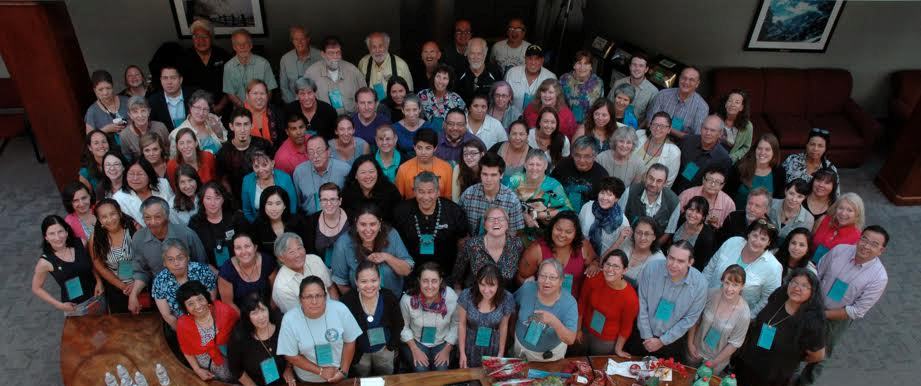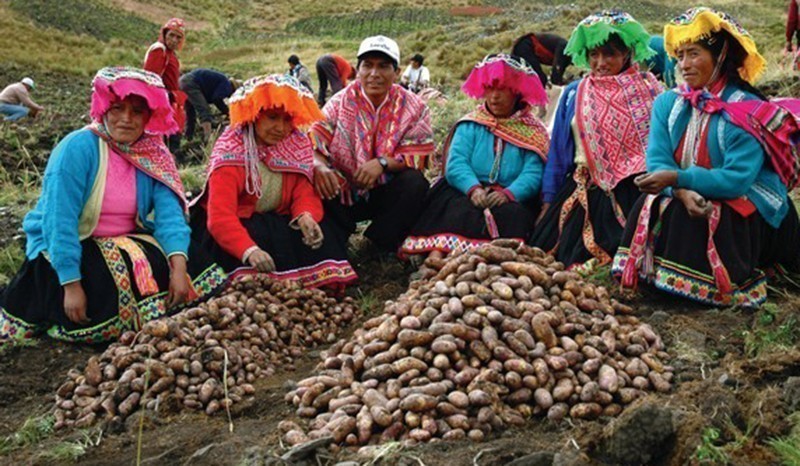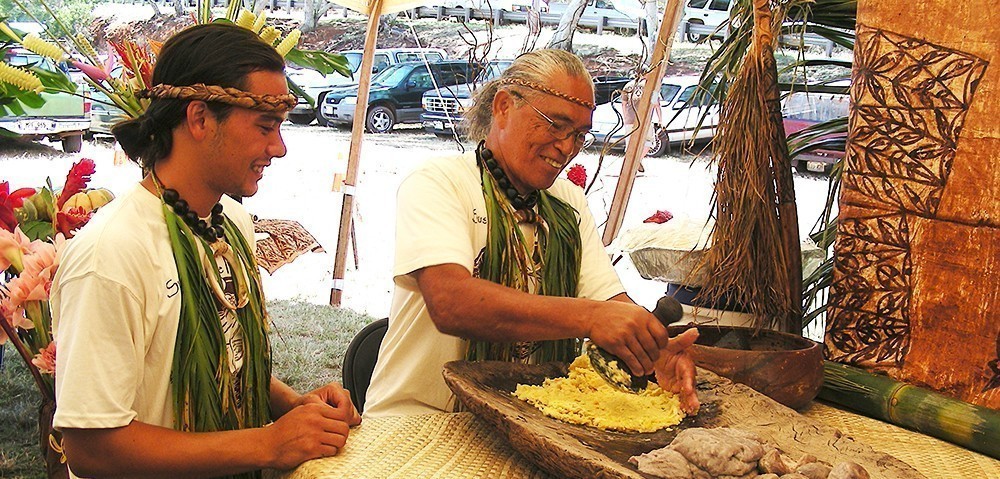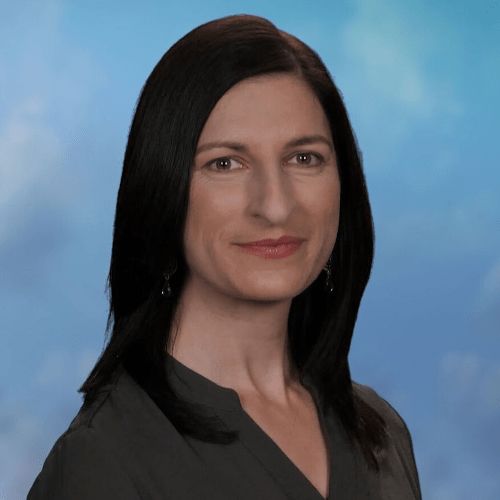
Rising Voices 3 workshop in 2015 © Heather Lazrus
IN THE PAST DECADE indigenous people have been participating increasingly in conversations about climate change in national and international arenas. This trend is reflected in the U.S. National Climate Assessment, which now features a distinct section dedicated to native people. It is called Indigenous Peoples, Land and Resources (Bennett et al. 2014). Internationally, the climate science community has recognized the need to include traditional knowledge in climate adaptation (IPCC 2014). Further, unprecedented numbers of indigenous peoples from around the world participated at the 21st Conference of the Parties (COP21) of the United Nations Framework Convention on Climate Change (UNFCCC) meeting in Paris in early December 2015. In Paris, they came with messages about the uneven impacts from a changing climate that fall disproportionately on their communities; communities which continue to be systematically marginalized by larger economic and political forces. Leading up to the meeting, the International Indigenous People’s Forum on Climate Change characterized COP21 as a potential “turning point or another missed opportunity on the hard path towards climate justice" (IIPFCC, 2015). Indigenous peoples are recognized in the preamble of the Paris Agreement, but not in the legally binding operative section. As a result, there is a ways left to travel along that hard path.
Rising Voices hosts annual workshops that bring together physical and social scientists, and engineers, with Native American, Alaska Native, and Native Hawaiian community members to assess community needs and to pursue joint research.
Toward this end, a program called Rising Voices: Collaborative Science with Indigenous Knowledge for Climate Solutions (Rising Voices) was launched in 2013 and is housed at the National Center for Atmospheric Research in Boulder Colorado. It is devoted to amplifying indigenous voices in climate science and adaptation, and to fostering direct collaboration among scientists and indigenous communities. Rising Voices hosts annual workshops that bring together physical and social scientists, and engineers, with Native American, Alaska Native, and Native Hawaiian community members to assess community needs and to pursue joint research. Among the indigenous participants are scientists and resource managers, some of whom work for tribal agencies, but beyond Rising Voices, indigenous scientists are a small minority. The program is premised on the belief that indigenous people make valuable contributions to mitigating the causes of climate change and adapting to its impacts. To encourage this understanding and collaboration, Rising Voices has created a list of recommendations for tribal, state, national, and international policy makers that was distributed among participants of COP21 in 2015. The recommendations reflect discussions at Rising Voices workshops, drawing on the experiences, achievements, lessons, and challenges that workshop participants have shared over the last three years.
Western science and traditional knowledge
Indigenous people's traditional knowledge and adaptive strategies have developed over millennia. They constitute an integral part of the cultural identity and social integrity of many indigenous cultures. An important form of traditional knowledge is called “ecological knowledge,” which is defined as “a cumulative body of knowledge, practice and belief, evolving by adaptive processes and handed down through generations by cultural transmission, about the relationship of living things (including humans) with one another and with their environment” (Berkes 1999:8). The importance of such traditional knowledge is increasingly recognized by non-indigenous scientists, but few of them actually interact with indigenous communities, partly because attaining the trust of community members and learning to follow culturally appropriate processes can entail significant temporal, financial, and cognitive investments (Agrawal 1995, Whyte 2013).
This challenge is what inspired the inception of Rising Voices. The program, founded by Heather Lazrus (National Center for Atmospheric Research) and Bob Gough (Intertribal Council on Utility Policy), and co-organized with Julie Maldonado (Livelihoods Knowledge Exchange Network) recognizes tremendous potential for collaborations that engage both indigenous knowledge and Western science. For instance, indigenous communities’ observations of environmental change can extend the scientific record or offer contextual understandings that go beyond laboratory-based findings. In turn, scientists can explain the physical processes behind these observations and understandings. Cultural diversity is especially critical in addressing climate change problems, because without diversity of thought “we pay an opportunity cost, a cost in designs not thought of, in solutions not produced” (NRC 2002:9). We cannot afford the cost of not including diversity as we face unprecedented challenges from a warming planet.
Collaboration between indigenous communities and scientists can yield surprising results. For example, when atmospheric scientists from the University of Colorado, led by Shari Gearhard and Betsy Weatherhead learned that Inuit hunters and elders from Baker Lake in Nunavut, Canada, have been observing increasingly unpredictable and variable springtime weather since the 1990s, they initially could not makes sense of it, based on their analysis of environmental measurements, which showed no change. By listening closely to how community members described the changes in the weather the team from CU began examining hourly data of the observations and discovered that the persistence of spring temperatures have indeed dropped significantly, indicating an important shift in the Arctic environment (Weatherhead, Gearheard, Barry 2010). This is a compelling example of how bringing different sources of knowledge together and linking specific observations can offer a more comprehensive understanding of a changing Earth, just as fitting together pieces of a puzzle reveals the complete picture.

Andean potato farmers © International Potato Center
In another example, Ben Orlove, an anthropologist now at Colombia University, conducted research in the Peruvian Andes with two atmospheric scientists, one from the University of California, Berkeley and one also from Colombia University, to investigate a phenomenon they had both independently observed—that Andean potato farmers could forecast the rainy season several months ahead. Annually, on a night in late June, during the festival of San Juan, farmers gather to assess the visibility of the Pleiades, a star cluster in the constellation Taurus. Based on their assessment during this ritual, they predict the timing and amount of precipitation they will receive during the planting months between October and March. How could these seasonal forecasts be so accurate? Meteorological and climatological analysis showed that the Pleiades appear more clearly to the naked eye when the atmosphere is drier, signaling a dry upcoming planting season. The reverse is also true. When the Pleiades appear indistinct or partially obscured, it is because of the atmospheric moisture that would bring a wet planting season several months in the future (Orlove, Chiang, and Cane 2002).
Workshops – encouraging cross fertilization
Studies that marry multiple knowledge systems have been conducted for many years—albeit in small numbers—long before Rising Voices was born three years ago. The organization recognizes the benefits of such studies and it promotes new ones that advance this collaborative and culturally sensitive approach. To promote this kind of research, Rising Voices hosts annual workshops, which have spawned programs and joint research proposals with collaborators from Indigenous and scientific communities. For example, several participants in the Rising Voices program who have attended workshops from Hawai’i are involved in the Global Breadfruit Heritage Council—a consortium of people who are building capacity for traditional Hawaiian agroforestry practices to honor and protect the genetic, cultural, spiritual, and environmental role of breadfruit trees. The Council has grown out of the lifelong work of several people who are now working to promote breadfruit as a culturally-significant, sustainable crop and gluten-free food that can be used in place of wheat. The program oversees specific projects led by Indigenous Hawaiian community members working closely with atmospheric scientists to model and monitor climate variability and change that may impact breadfruit crops. This knowledge can help cultivators plan where and when to develop agroforestry systems to support breadfruit trees which grow well in tropical areas. This work with breadfruit is leading to a national-scale phenology study to observe ecology across the country around agroforestry systems such as indigenous breadfruit agroforestry.

A resident of Halawa Valley, Molokai, Hawaii, pounds breadfruit into poi, a traditional Polynesian staple food made of taro. © PROKristina D.C. Hoeppner
As for all indigenous communities represented at Rising Voices workshops, water has always been a central feature of Native Hawaiian culture, society, and governance. Today, many communities in Hawai’i mobilize around restoring cultural or natural resources using traditional values or management and governance systems. Traditionally, Native communities were arranged in land divisions called ahupua'a, vertical swaths running from mountain tops to the seaside alongside rivers or streams in an early form of watershed management. A research project proposed by Rising Voices collaborators plans to understand how drought affects vestiges of the ahupua’a system as well as other cultural practices for which water is central, including farming kalo, another traditional staple along with breadfruit. The proposed research reflects other examples of successful watershed-based, inter-tribal management of numerous water-related sectors such as the Yukon River Intertribal Watershed Council which manages local land use, solid waste, energy, and drinking water.
Challenges
Some speed bumps on the path to implementing this kind of collaborative research may seem mundane, but can make or break research. Besides the more nuanced challenges to successful collaborations, such as building mutual trust, which takes a lot of time, energy, and funding, following appropriate cultural protocols can also be challenging. Scientists must understand that indigenous knowledge is not an “extractable resource” and may be sensitive, sacred, or secret. Appropriate protocols include meeting with community leaders or Institutional Review Boards.1 The process for this sort of collaborative research may look very different from research conducted in laboratories. For instance, from the very beginning scientists need to inform community collaborators how the research questions are asked, what scale of analysis is appropriate, and how the information is accessed and assessed. All of these factors are discussed at Rising Voices workshops. Some participants have written a helpful guide book, called Guidelines for Considering Traditional Knowledges in Climate Change Initiatives. It was prepared for the Department of Interior Climate Change Advisory Committee (Climate and Traditional Knowledges Workgroup 2014).
Increasingly, it is the small but growing pool of indigenous scientists who have helped bridge the gap between indigenous communities and non-indigenous researchers. Indigenous scientists can play important roles by bringing their culturally-informed perspectives to their science, and they can explain to communities why scientific insight is meaningful and relevant to them.
Unfortunately, indigenous people are still underrepresented in atmospheric sciences, decision-making, and policy efforts. Suzanne Van Cooten, a hydrometeorologist, examined the participation of Native American/Alaska Natives in weather and water academic programs and the federal workforce. Her data shows that, across the United States, between 2000 and 2008, 5350 PhDs were awarded to students in Earth, oceanic, and atmospheric sciences. Only 17 of these were awarded to Native American and Alaska Native students. According to Van Cooten, another reason for the dearth of indigenous people in leading positions in scientific and engineering organizations is that few of them exist at junior levels.

Rising Voices 3 workshop in 2015 © Heather Lazrus
Recommendations
Aiming to achieve a more positive trendline for indigenous communities and scientists alike, experts, students and science professionals—both indigenous and non-indigenous—who have participated in to Rising Voices workshops over the last three years submitted a list of recommendations for policy makers across all scales of decision making, which was sent to a number of COP21 participants.
One of our key recommendations calls for the inclusion of indigenous perspectives, insights, and knowledges in agency-led and nationally and internationally appointed assemblies concerned with natural resources, environmental management, and policy. The free, prior, and informed consent of indigenous people should be respected when these assemblies are formed and engagement with indigenous peoples is included, as per the United Nations Declaration on the Rights of indigenous Peoples. Indigenous peoples have a rich knowledge of their environment that is important for filling in lack of data and for developing adaptation and sustainable strategies.
Another recommendation focuses on building the capacity of youth leaders to be fluent in both scientific and indigenous knowledge in order to inform practice and policy. Rising Voices participants suggest the creation of a Climate Change Service Corps to support youth from indigenous and non-indigenous backgrounds to work with communities and with scientists to find climate solutions. Capacity would be enhanced through mentorships, scholarships, and internships with local federal agencies. Ultimately, the Climate Change Service Corps will strengthen resilience amongst indigenous and non-indigenous communities around the country— and potentially internationally—for the near- and long-term. This recommendation may also bring more indigenous people into the atmospheric sciences, reducing the gap discussed above.
Also based on indigenous understandings of ecology, participants recommended that a practice of ecological renovation replace current approaches of ecological restoration. Ecological renovation goes further than restoration to revitalize ecosystems and thereby also the communities which depend on them. Place-based community observations, citizen-science programs, and community-to-community exchanges of knowledge and experience form bases for ecological renovation. This recommendation is embodied by the Global Breadfruit Heritage Council’s work to promote Native Hawaiian agroforestry practices which layer multiple plant species in one “food forest,” thereby increasing species diversity and promoting ecological health.
Indigenous peoples’ voices must be heard, and one way to do this is to include more people from indigenous communities as collaborators with and members of scientific institutions, spanning from research organizations to policy making agencies
A specific recommendation addresses water. Recognizing the centrality of water to our nation’s ecosystems and citizens’ livelihoods, participants proposed an Indigenous Water Network which would be a collaborative, international network based on examples such as the Yukon River Intertribal Watershed Council and the native Hawaiian practice of ahupua'a watershed management described above. The Network would facilitate multi-government action across scales to manage water resources.
Towards climate justice
These recommendations will help advance the understanding and practice of “climate justice” in the United States and throughout the world. Climate justice intrinsically links the causes, consequences and cures of environmental degradation—especially flowing from climate change— with the racial, social, and economic inequities that the degradation perpetuates. For indigenous communities who are already rendered vulnerable due to histories of colonization, the impacts of climate change further weaken adaptive capacities stored in traditional knowledge and practices. Justice and science are inseparable. Indigenous peoples’ voices must be heard, and one way to do this is to include more people from indigenous communities as collaborators with and members of scientific institutions, spanning from research organizations to policy making agencies. Institutional change is needed to foster the sorts of trust and respect that are required for cross-cultural collaborations, and to safeguard traditional knowledge so that it is always treated culturally sensitive. These recommendations, if implemented, could infuse atmospheric science and climate-change policy with more cultural diversity, novel approaches and solutions. That change would benefit everyone, all cultures—indigenous and non-indigenous, scientists and non-scientists.
References
Bennett, T. M. B., N. G. Maynard, P. Cochran, R. Gough, K. Lynn, J. Maldonado, G. Voggesser, S. Wotkyns, and K. Cozzetto. 2014: Ch. 12: Indigenous Peoples, Lands, and Resources. Climate Change Impacts in the United States: The Third National Climate Assessment, J. M. Melillo, Terese (T.C.) Richmond, and G. W. Yohe, Eds., U.S. Global Change Research Program, 297-317. doi:10.7930/J09G5JR1.
Climate and Traditional Knowledges Workgroup (CTKW). 2014. Guidelines for Considering Traditional Knowledges in Climate Change Initiatives. https://climatetkw.wordpress.com (accessed April 1 2016).
National Research Council. 2002. Diversity in Engineering: Managing the Workforce of the Future. The National Academies Press.
IIPFCC. 2015. Our Proposals to COP21 and Beyond. November 29, 2015. http://www.iwgia.org/iwgia_files_news_files/1290_IP_Political_statement.pdf (accessed on April 26, 2016)
Orlove, B., Chiang, J., Cane, M. 2002. Ethnoclimatology in the Andes: A cross-disciplinary study uncovers a scientific basis for the scheme Andean potato farmers traditionally use to predict the coming rains. American Scientist 90(5):428-435.
Redsteer, M.H., Kelley, K.B., Francis, H. and Block, D. 2010. Disaster risk assessment case study: Recent drought on the Navajo nation, southwestern United States. Background Paper prepared for the 2011 Global Assessment Report on Disaster Risk Reduction. Geneva, Switzerland: UNISDR. Van Cooten, Suzanne. 2014. Where Are the Indigenous Scientific Leaders? Examining the Participation of Native American/ Alaska Natives in Weather and Water Academic Programs and the Federal Workforce. Bulletin of the American Meteorological Society. 95(11): 1725–1740.
Weatherhead, E., S. Gearheard, and R. G. Barry. 2010. Changes in weather persistence: Insight from Inuit knowledge. Global Environmental Change 3: 523-528.
-
An Institutional Review Board (IRB) is a committee established to review and approve research involving human subjects. The purpose of the IRB is to ensure that all human subject research be conducted in accordance with all federal, institutional, and ethical guidelines. ↩

